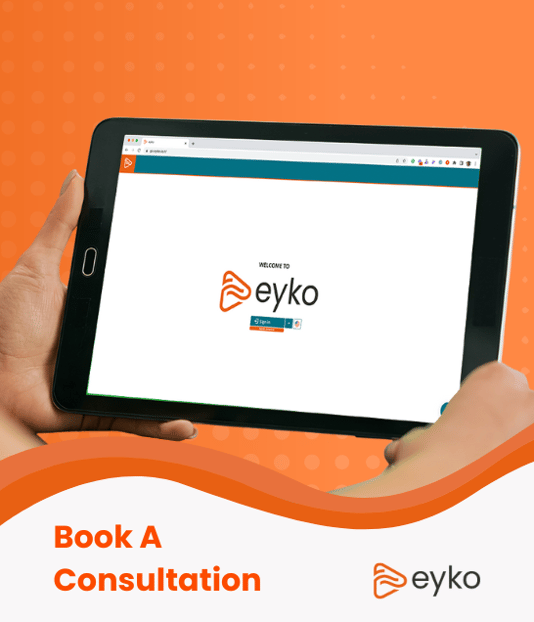Why has Operational Reporting become so difficult?
Why Has Operational Reporting Become So Difficult?
Have you noticed how much more difficult it has become to deliver operational reporting using data from multiple data sources?
Perhaps you chose the wrong reporting tool? At first glance, it’s easy to think the problem lies in the reporting tools themselves, but in fact these products have gotten better, not worse. We think it's less about choosing one reporting tool over another and more about how you can quickly make sense of your data.
This shift in thinking from "reporting" to "data" is at the heart of simplifying operational reporting. It also comes with the added benefit of getting the reports you need from the tools you already own.
More Systems, More Data, More Problems
To help understand this shift, let's start by looking at what has changed in your business over the last couple of years. One of the most significant changes for many companies is transitioning away from a single Enterprise Resource Planning (ERP) system to run the business. Today, a combination of standalone applications specifically designed for each business function often complements ERP. The emergence of great "boutique" systems, such as Salesforce, HubSpot, Workday, and Anaplan, has transformed almost every aspect of the enterprise - from Sales to Human Resources.
These systems have also been adopted rapidly, with subscription pricing making them easy to buy. In addition, being in the Cloud has made these applications easy to implement and manage, meaning IT doesn't need to be heavily involved in maintenance or support. Very quickly, every business function has managed to accumulate its own collection of these best-of-breed systems. Each system often comes with inbuilt reporting and dashboarding solutions, enabling users to view and use the data in ways they never previously imagined. But as each function acted autonomously and purchased its own systems, few considered the impact on data integration, data integrity, and operational reporting across these functions.
A Hidden Tax
Each system becomes its own data silo. Each silo operates with its own proprietary rules for the data it manages, with little or no regard for the data beyond its control. Many of these applications provide excellent reporting and analytics - but only within the bounds of the silo. So, unfortunately, we must deal not only with data silos but reporting silos too.
A “hidden tax” has quickly started to emerge for the people who work across business functions and rely on data from multiple point solutions to do their jobs. The operational reports and dashboards that operated so well when all the data was in one system no longer worked. This subtle and significant shift in strategy towards boutique systems is driving the need for multi-data source operational reporting.
With data fragmented across many Clouds and on-premise standalone applications, there's little or nothing to monitor quality and ensure data integrity between these systems. As a result, even something as simple as a consistent customer name is challenging, often defined in multiple isolated systems differently.
For example, a customer profitability report becomes problematic if the customer's name in the CRM doesn't match the name in the finance, service, or time-recording systems. Even having the peace of mind that you have billed everything sold requires integrity between invoice data in the finance system with sales opportunities in the CRM. So even if you could report across multiple systems, without a robust way to ensure the accuracy and reliability of the data, the exercise is futile.
Current Approaches
There are two main approaches used today to try to solve this problem.
The first involves stitching the data back together and rebuilding referential integrity to restore trust in the data. This approach is a central concept behind data warehousing and data lake projects. The focus is on establishing a single source, not on data use or its suitability for reporting. Agility is also an issue when the number of systems and data requirements constantly change.
The alternative focuses on reporting, but the challenge in this case shifts to manipulating data. For example, one method could be dumping data from the different systems into Excel or extracting the data from one system and squeezing it into another. This latter practice is particularly seductive if one of the applications has a good report writer. However, it still feels like putting a square peg in a round hole.
Broadly, companies have managed to put something together that has enabled the business wheels to turn. Still, it has come at a high cost in terms of time and money. For many, the impact is more than just the financial cost. It has also required a change in the way people work and their expectations around the data they will have available to do their job. For example, quickly answering questions using ad-hoc inquiry tools used to be easy. Real-time access was normal. But when data exists across a range of disparate systems, it becomes a real challenge.
A New Approach, Not Another Reporting Tool
So, while many aspects of a business have moved forward, it's also fair to say some have taken a backward step. However, all is not lost. A solution that can deliver simple and accurate operational reporting across multiple data sources doesn't require another reporting solution, just a new approach.
Reporting is easy if you can effectively blend data. Blending isn't just about the ability to connect to multiple systems – effective blending tools need to understand the applications, so all the complexity is removed. Intelligent blending establishes consistency and data integrity across systems. It also enriches the data to meet the reporting needs of the business.
Done right, you don't need another reporting tool because you stream the blended data right into the reporting tools you already own.
It might seem counter-intuitive to solve a reporting problem without changing the reporting tool, but it's a blending issue in reality. It just got mischaracterized. Are you willing to consider that this might be the case and take a different approach? If so, it's possible to embrace the world of disconnected business applications in a way that feels like it's a single system.
A cloud bending and streaming platform like eyko will allow you to achieve the possibilities of this new vision and simplify your reporting needs. Visit our home page or check out the rest of our blog to learn more about what makes eyko different.
Share this
You May Also Like
These Related Stories

Operational Reporting across enterprise applications - simplified.

eyko Solves Customers' Problems

